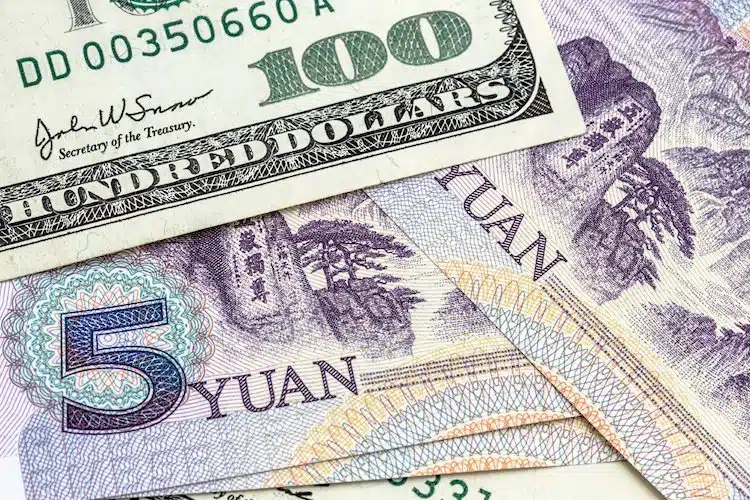In the world of currency trading, the fixing of the yuan rate by the People’s Bank of China (PBOC) has always been a hot topic. This is due to the fact that China, as one of the world’s largest economies, wields massive influence over global financial markets.
Today, the PBOC set the yuan at 6.9655 against the US dollar, slightly lower than the previous day’s fix of 6.9666 and a hair below the prior closing rate of 6.9630. However, what is the significance of this move?
First, it’s important to understand the difference between the onshore yuan (CNY) and the offshore yuan (CNH). The former refers to the currency traded on China’s mainland and is subject to strict government controls. This includes regulations on how and when it can be traded, making it less attractive to foreign investors. In contrast, the latter is traded in Hong Kong and is not as tightly controlled, allowing it to reflect market forces more closely.
Each day, the PBOC sets a daily midpoint fix for the yuan, which serves as a reference point for the currency’s trading range for the rest of the day. This fix is determined by taking into account various factors such as the previous day’s closing rate, quotes from interbank dealers, and the current state of the global economy. It’s worth noting that the PBOC can adjust the fix at any time during the day if market conditions warrant it.
Now, let’s dig deeper into the significance of today’s yuan fix. One possible reason for the slight decline may be concerns over China’s economic growth. Despite its size and heft, China has been showing signs of slowing down in recent years. This is due in part to its ongoing trade war with the US, which has led to increased tariffs on Chinese goods and decreased demand for its exports.
Other factors may also be contributing to the yuan’s decline. For example, the recent spread of the coronavirus has led to widespread travel restrictions and decreased economic activity in China. This, in turn, has put pressure on the yuan as investors fret about the impact on the country’s economy.
On the other hand, there are also reasons to be optimistic about the yuan’s future. For one, China has been taking steps to liberalize its currency over the past several years. This includes reforms that make it easier for foreign investors to trade the yuan and a push to make the currency more widely used in international trade. These efforts are likely to continue in the years to come, which could help the yuan gain strength over time.
Another factor to consider is the US Federal Reserve’s recent decision to lower interest rates. This move makes it more attractive for investors to put their money into higher-yielding currencies such as the yuan. In addition, the US-China Phase One trade deal announced in December 2019 may help alleviate some of the tensions between the two countries, potentially boosting the yuan’s value.
All of these factors highlight the complex interplay between the yuan, China’s economy, and global financial markets. While today’s yuan fix may seem like a minor event, it reflects a much larger trend in the world of currency trading. As such, it is worth paying attention to for anyone who wants to stay up-to-date on the latest developments in global finance.


